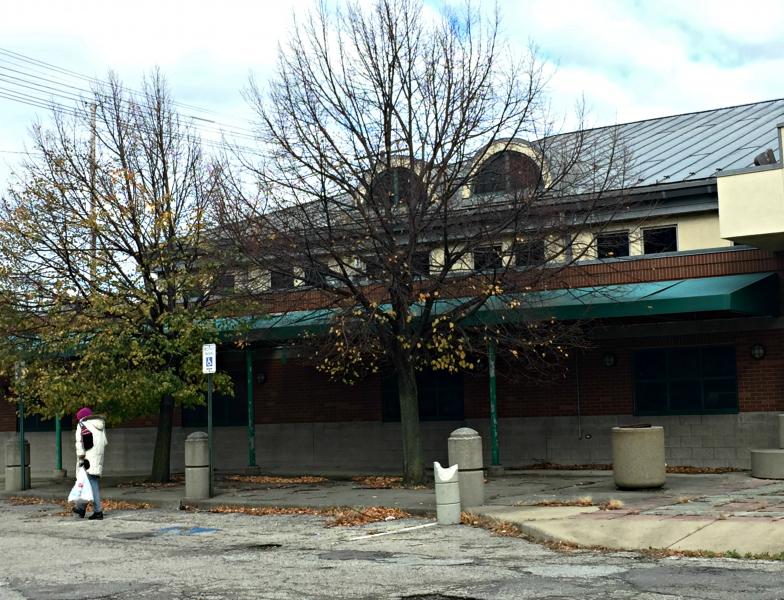Ward 8 Councilman Mike Polensek says it’s clear from where he’s standing at the corner of East 105th and St. Clair Avenue: “This section of Glenville is a food desert.”
Glenville residents are among 23.5 million Americans who live in what the USDA calls a “food desert," that is a low-income neighborhood where at least a third of the population lives a mile away from a food market. calls a “food desert," that is a low-income neighborhood where at least a third of the population lives a mile away from a food market.
“We need a grocery store here,” says Councilman Polensek.
Supermarkets deserted the food desert
Along with Polensek and Ward 9 Councilman Kevin Conwell, Ward 10 Councilman Jeff Johnson also has constituents in Glenville.
He says fresh food disappeared from the neighborhood when supermarkets pulled out in the '80s.
“There was a lot of consolidation in the industry. Pick-n-Pay was bought by Finast, and others consolidated. And then we have some who don’t want to come to an inner-city. Heinen’s  went downtown, but they would never dream of coming into our neighborhoods.” went downtown, but they would never dream of coming into our neighborhoods.”
To illustrate the need, Councilman Johnson takes us for a tour in his car.
Mini-marts galore but nothing fresh
On almost every corner he points to a mini-mart or a deli, "a store that sells cigarettes, alcohol and lottery. And those are the stores that ... usually have reports of bad meat, if they even have meat in there. They got a lot of processed food in there. And Mike and I just think we have too many of these.”
“We have objected," says Councilman Polensek. “Unfortunately the state continues to issue liquor licenses. So you’re looking at empty corners, boarded-up buildings. And the reality was, in the day, you’d go three blocks and you’d have a store.”
No more neighborhood grocers
Councilman Johnson points to a boarded-up building.
“This used to be a grocery store right here. It was actually owned by an African American. He did sell fresh fruits and vegetables. That’s when you actually had that typical neighborhood store. fruits and vegetables. That’s when you actually had that typical neighborhood store.
“Now, as far as we’ve driven down 105th Street, which is a major corridor, this is like the major artery between north and south Glenville, and we’ve not seen one store that offers fresh fruits and vegetables,” Johnson notes, adding, “I’ll tell you, we can go all the way down into University Circle and you will not find a store.”
Collaboration across ward boundaries
Glenville is an historic east-side neighborhood just south of the Cleveland Memorial Shoreway.
It’s been plagued with crime, poverty and racial tensions that culminated in the 1968 Glenville shootout.
But it wasn’t always a low-income area.
 When the City of Cleveland annexed the village of Glenville in 1905, it had been a resort community for the upper-middle class. When the City of Cleveland annexed the village of Glenville in 1905, it had been a resort community for the upper-middle class.
Glenville became Mike Polensek’s concern only last year, after new ward boundaries were drawn. Jeff Johnson grew up here.
An oasis is coming
But most of Glenville is in Councilman Kevin Conwell’s Ward 9, and he’s been working just as hard as Johnson and Polensek to bring an oasis to the food desert.
The three co-sponsored a bill that Cleveland City Council passed in September to bring a grocery store to Glenville.
Conwell recently met with Mayor Frank Jackson and convinced him to sign the legislation.
Once lease agreements are worked out, the long-abandoned East Side Market building at E. 105th and St. Clair Avenue would house Mazzulo’s Grocery Store as well as Northeast Ohio Neighborhood Health Services Inc.’s health and nutritional programs.
Only two blocks separate Johnson, Conwell and Polensek’s wards. After last year’s redistricting they pledged to work as a team.
“With this Northeast Coalition, we work across ward boundaries. We try to assist each other,” says Polensek. “Ward boundaries change, but the issues don’t.”
Equal access to healthy food
The key issue for Johnson is equal opportunity. Cleveland has become a foodie mecca, with celebrity chefs making national news.
 But not in this neighborhood. But not in this neighborhood.
“Northeast has been basically neglected from investments. You know you have your Tremonts; you have your Ohio Cities; you have your Detroit Shoreways. Those were the ones that leaders focused on.
"When Mike and I, and Kevin got together, we decided enough was enough, and we fought hard to start to get more investment in here.”
Their fight is bearing fruit.
The $3.5 million renovation of the East Side Market is set to open by mid-summer. |